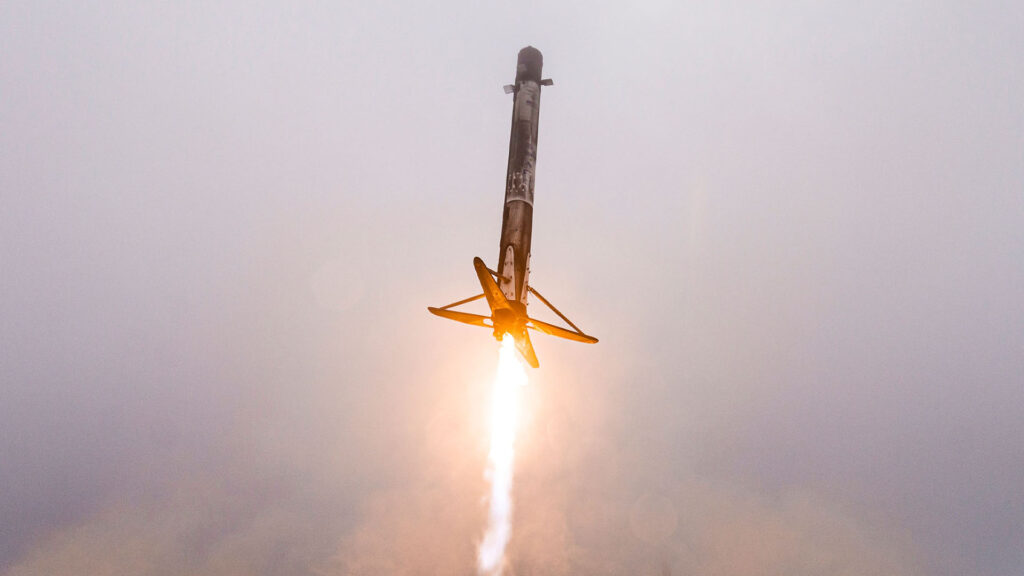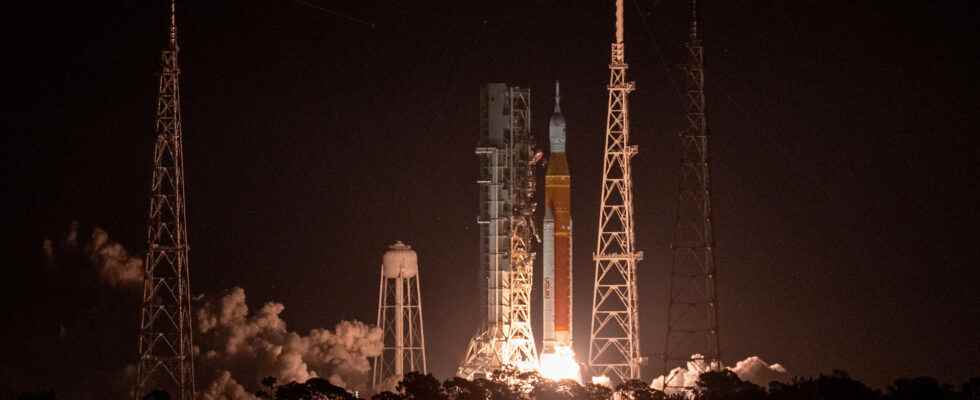The huge SLS rocket has proven that it works. She successfully lifted off on November 16, sending the Orion spacecraft to the Moon. But, unlike a SpaceX Falcon 9, the SLS cannot be reused. It is not a coincidence.
She finally took off. “She” is the Space Launch System (SLS) rocket, which has finally made its maiden flight on November 16, 2022 after months of delay. It is with this launcher that humanity will return to the Moon during the 2020 decade. But it will not be with the rocket that has just left Earth: indeed, it has become unusable.
This is one of the characteristics of the SLS: it was not manufactured on the same model as the SpaceX launchers, with a reusable first stage (a feature that can also be found elsewhere, such as the New Glenn launcher from Blue Origin). This means that each SLS is single-use, just like Ariane. The majority of rockets in the world work this way.
This lack of recovery is noted in this diagram from the European Space Agency, published on November 15. It can be seen that the two lateral thrusters are ejected two minutes after takeoff, followed by the main stage after eight minutes. At no time is the possibility of recovering them mentioned – the same, moreover, for the second floor.
The US space agency says the same thing: once they have burned their propellant […]the boosters are discarded, lightening the load for the rest of the spaceflight “. According to NASA, the boosters fall back into the Atlantic Ocean, 225 km off the coast of Florida, while the main stage ends up in the Pacific, between Hawaii and California.
When we know the success encountered by SpaceX with its recovery policy, this inevitably calls out.
After all, when the American company operates the Falcon 9, the main stage automatically returns to Earth and refills several times. Ditto with the Falcon Heavy and its two side boosters (which are actually parts of Falcon 9 launchers). Thus, SpaceX can chain the shots and lower its costs, because it does not need to rebuild a rocket from scratch.
All the fuel must be used for sending to the Moon
To this question, NASA has provided an explanation on its official website: including such a capacity would logically require reserving part of the fuel (or adding some) to ensure the controlled return of the main stage to Earth. However, the SLS uses its power to maximize the cargo the rocket can send to the Moon. »
Adding fuel would affect the overall mass of the SLS. Ditto if it was necessary to provide a propulsion system cut for this kind of mission. It would also be necessary to possibly envisage a foot of landing in the event that one wants that the stage is posed correctly with the vertical one. Again, this adds bulk and complexity (and risk of failure).
Another element deserves to be considered. It’s one thing to judge NASA’s choices for the SLS today with the successes of SpaceX in mind. It is quite another to place oneself in the context of the time, when the American mega-rocket project was formalized. And when SpaceX had not yet proven the relevance of this model.
The SLS project was formalized in September 2011, following in the wake of the Saturn V rocket from the time of the Apollo missions (it too was not reusable). Certainly at the time, SpaceX already existed. Several of its rockets had successfully lifted off and put payloads into orbit. It was not until April 2014 that the central stage of a Falcon 9 could be recovered for the first time.
During these two and a half years, the design of the SLS has progressed in parallel, which has increasingly fixed its final design. In addition, the project had already swallowed up significant funds. As for SpaceX, it still took a few years before reaching the stage where this recovery became a routine operation. The SLS was then nearing completion.
At the turn of 2010, who was already imagining the extent of the upheaval that the era of reusable launchers would be for the space sector? “New Space” players, like SpaceX and Blue Origin, no doubt. But among the organizations already in place, this subject was obviously not yet such an obvious and critical subject.

Would it have been possible to redirect the development of the SLS along the way, assuming that the integration of such a capability would be useful to the Artemis program? As it was not initially thought for this, it was taking the risk of starting from scratch, or almost. With a rocket that has already cost almost 27.5 billion dollars, multiplying the budget overruns, the pill would have been difficult to swallow.
Beyond funding issues, these design changes would have been likely to further delay the start of the Artemis mission – if only to conduct a test campaign to validate the recovery of the SLS first stage. It is exposing oneself to delaying the return of astronauts to the Moon for a few years. And, by extension, the start of a mission to Mars. Is this reasonable when China is also moving forward and has great ambitions in this area?

